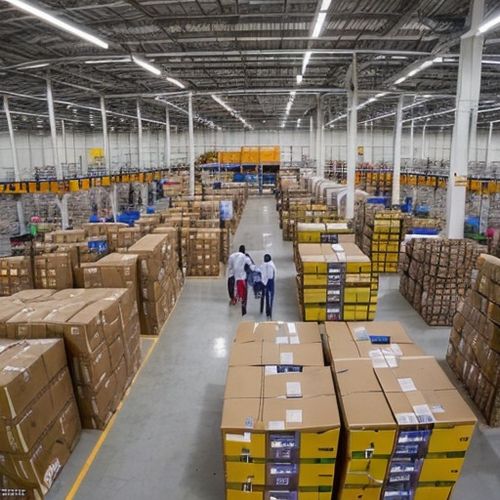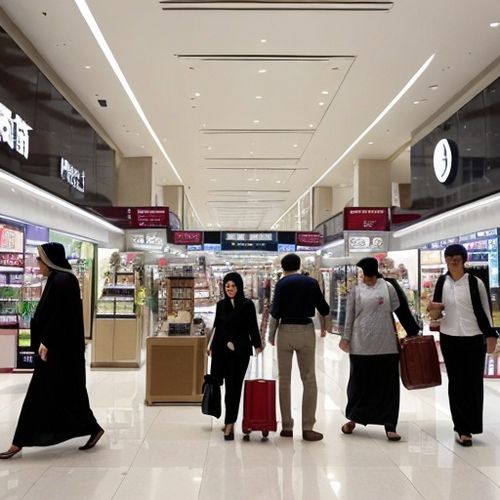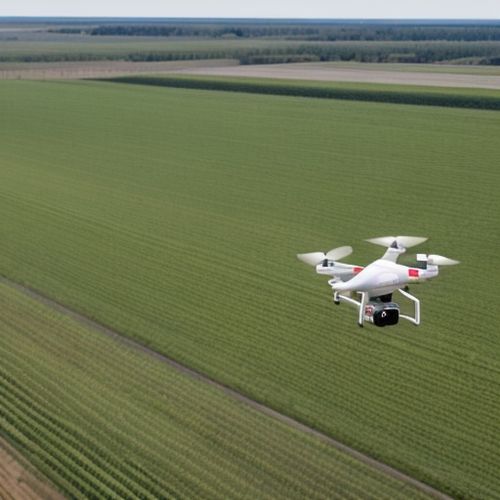The hum of propellers has become an increasingly familiar sound in the skies above America's farmlands. Walmart, the retail behemoth that built its empire on big-box stores and suburban sprawl, is now betting heavily on drone technology to reach its most geographically challenging customers. What began as pilot programs in a handful of rural communities has expanded to drone delivery hubs serving populations across six states. But as the program scales, serious questions emerge about whether the economics of drone delivery can truly work where mailboxes sit half a mile apart and cellular coverage remains spotty.
The Rural Equation: Where Drones Make (Some) Sense
Walmart's calculus appears straightforward on the surface. Rural customers typically face longer drives to physical stores, making delivery more valuable. Traditional last-mile delivery costs skyrocket in low-density areas where drivers might spend an hour to complete three deliveries. Drones bypass this entirely by flying as the crow flies at 65 mph, theoretically making each delivery cheaper than sending a gas-guzzling van down winding country roads.
Internal documents obtained by industry analysts suggest Walmart's current drone delivery cost hovers around $7 per drop in optimal conditions - significantly below the $10-15 per package for conventional rural delivery. The breakpoint comes at about 1.5 deliveries per square mile daily, a threshold many rural areas easily exceed for medications and emergency supplies. During peak seasons like hunting or harvest time, demand surges for last-minute parts and equipment where drones demonstrate particular advantage.
Hidden Costs in the Cornfields
Beneath these promising numbers lurk less-discussed realities. FAA regulations currently limit drones to visual line-of-sight operations, requiring Walmart to establish micro-fulfillment centers at existing stores. Retrofitting these facilities with climate-controlled drone ports and maintaining fleets of $50,000 drones isn't cheap. Then there's the human factor - each hub requires certified pilots (starting at $28/hour) to monitor flights, plus teams for maintenance and battery management.
Weather presents another wild card. High winds common in plains states ground drones up to 40% of operating days according to Arkansas trial data. Winter brings its own challenges - lithium-ion batteries lose efficiency below freezing, requiring expensive heating systems. Many rural customers report frustration when needing deliveries most (during snowstorms or planting season) only to find drones grounded.
The Customer Adoption Puzzle
Walmart's own surveys reveal curious behavioral patterns. While 68% of rural respondents express interest in drone delivery, actual usage skews heavily toward sub-3lb emergency items - insulin deliveries see 92% repeat usage, whereas grocery trial hovers at 17%. The $3.99 delivery fee (waived for Walmart+ members) appears to deter routine use, suggesting drones may remain a premium service rather than an everyday solution.
Privacy concerns also emerge unexpectedly. In communities where everyone knows each other's business, drones attract attention. Several trial participants reported discontinuing service after neighbors complained about "spying" or the noise of frequent flyovers. Walmart has responded by programming drones to avoid flying directly over homes when possible and implementing strict data policies.
The Regulatory Tightrope
Current FAA rules create artificial constraints that impact profitability. The 400-foot altitude limit and requirement to avoid all non-participating airspace means drones often take circuitous routes. One North Carolina operator described sending a drone 4.2 miles to deliver a package just 1.8 miles away as the crow flies due to these restrictions. Proposed rule changes could help, but rural areas lack the cellular infrastructure needed for more autonomous Beyond Visual Line of Sight (BVLOS) operations.
Insurance costs add another layer. While Walmart self-insures its fleet, smaller partners in the program report liability premiums adding $1.20-$1.80 per delivery. This becomes problematic when delivering lower-margin items - nobody minds a $15 drone delivery for a $150 prescription, but the economics collapse when delivering $8 over-the-counter medications.
The Road Ahead: Niche Solution or Rural Revolution?
Walmart appears committed to the drone experiment, recently announcing plans to expand service to 60% of the Dallas-Fort Worth population. But the rural play may follow a different trajectory. Insiders suggest the company is developing a hybrid model where drones handle urgent deliveries from local stores while traditional methods serve bulkier orders. This acknowledges the technology's current sweet spot: lightweight, high-value, time-sensitive deliveries in areas where alternatives are prohibitively expensive.
The ultimate test may come down to battery technology. Current systems allow about 12 deliveries per charge cycle with 30-minute recharging pauses. Next-generation solid-state batteries could double this capacity while reducing weather sensitivity. If these developments coincide with relaxed FAA regulations, the rural drone delivery equation might finally balance. Until then, Walmart's flying warehouses remain an intriguing experiment - one that reveals as much about the challenges of rural commerce as it does about the future of delivery.

By Sarah Davis/Apr 7, 2025

By Samuel Cooper/Apr 7, 2025

By Grace Cox/Apr 7, 2025

By Thomas Roberts/Apr 7, 2025

By Olivia Reed/Apr 7, 2025

By Daniel Scott/Apr 7, 2025

By Megan Clark/Apr 7, 2025

By Samuel Cooper/Apr 7, 2025

By William Miller/Apr 7, 2025

By John Smith/Apr 7, 2025

By Samuel Cooper/Apr 6, 2025

By Lily Simpson/Apr 6, 2025

By Daniel Scott/Apr 6, 2025

By Grace Cox/Apr 6, 2025

By Olivia Reed/Apr 6, 2025

By Emma Thompson/Apr 6, 2025

By Rebecca Stewart/Apr 6, 2025